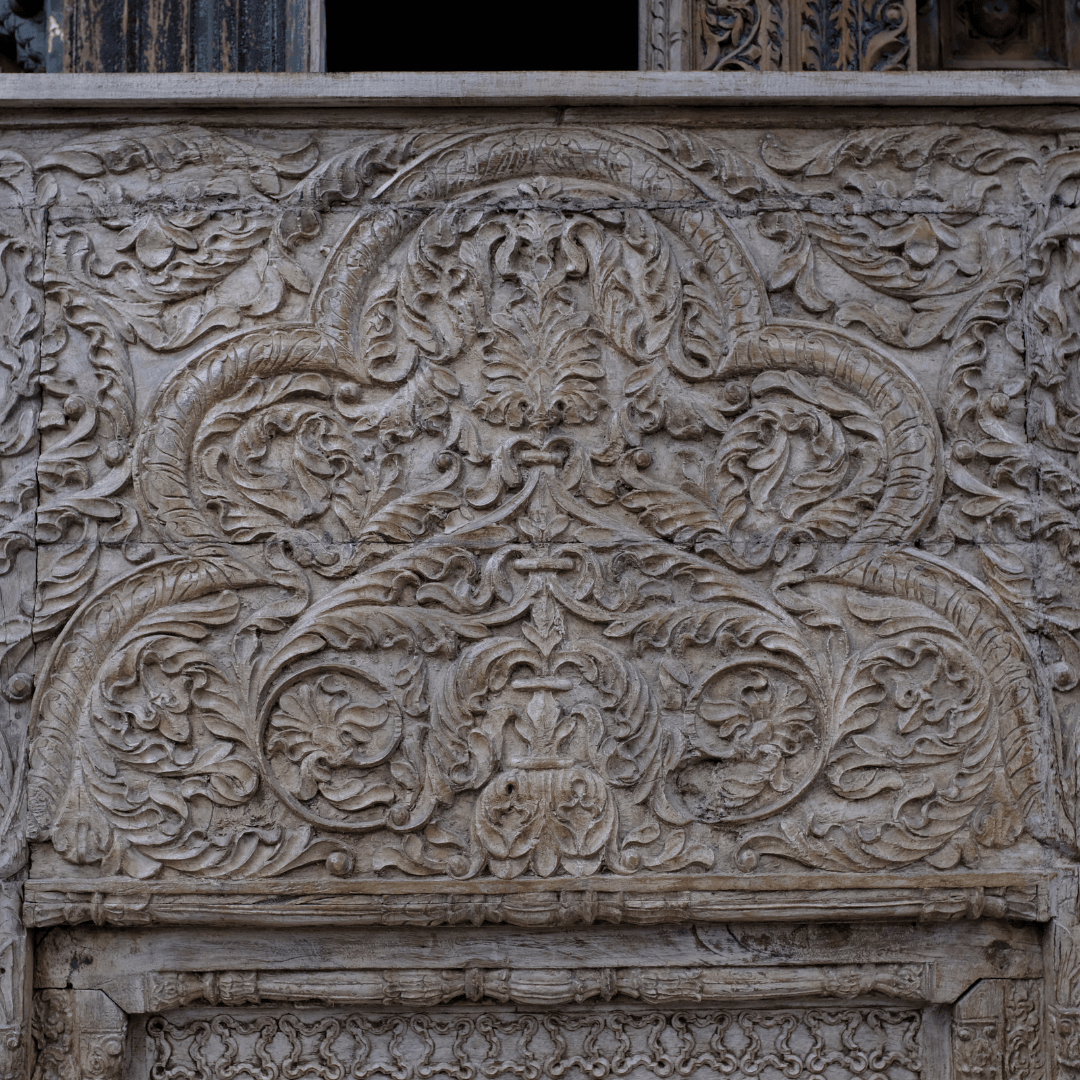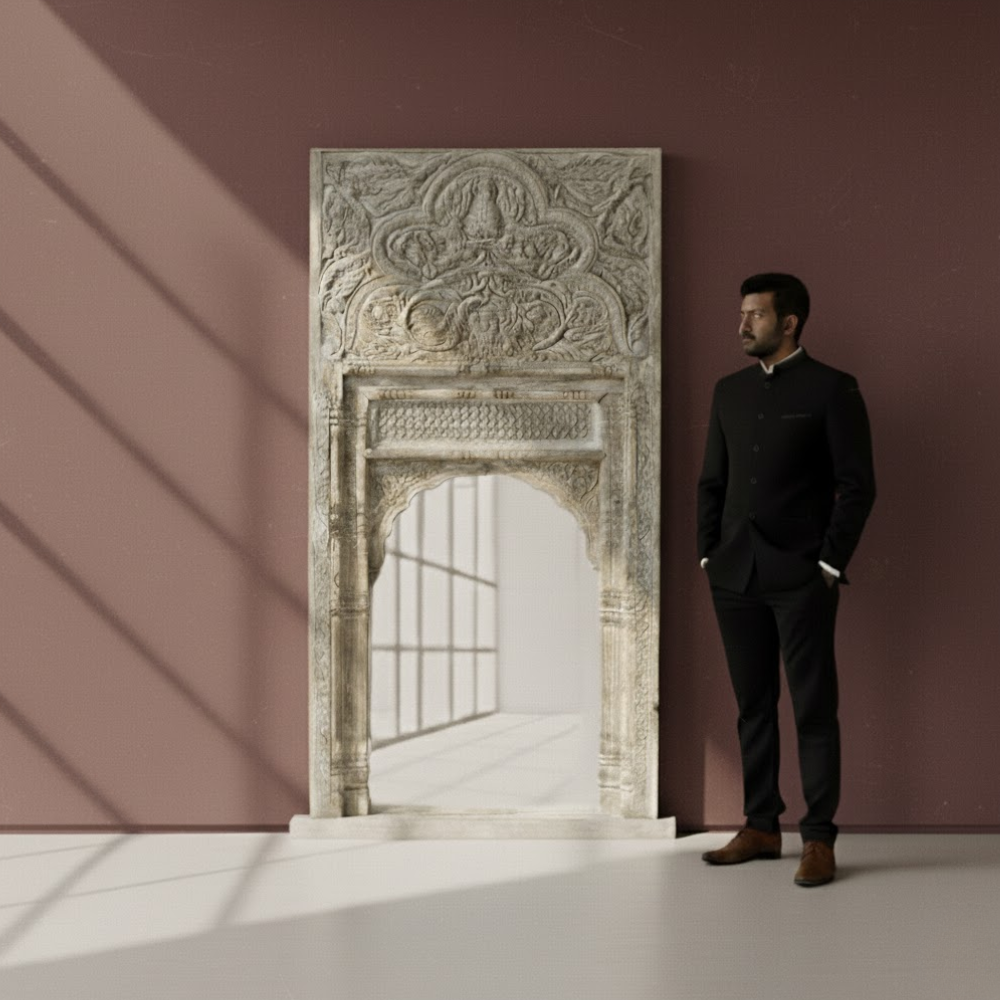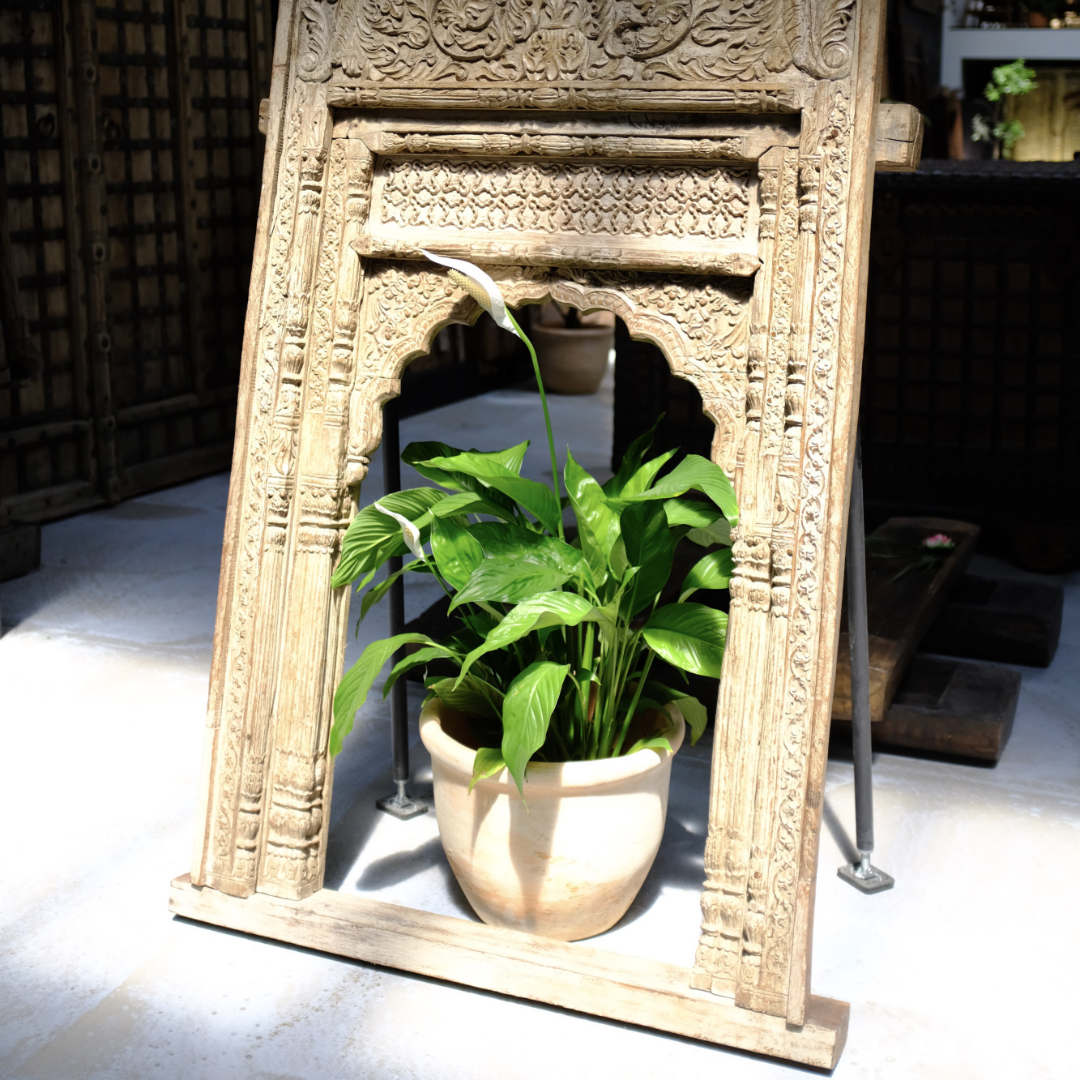
Price
Materials
Period
Place of origin
SKU
Dimensions
Available Stock: 1
About the product
Antique 19th-Century Indian Jharokha Mirror
Hand-Carved Teak and Mango Wood | Mughal Window Frame | Rajasthan, India
Architectural Heritage Reimagined
This magnificent 19th-century Jharokha mirror captures the essence of Rajasthan’s architectural grandeur. Hand-carved from solid teak and mango wood, it was once part of a noble haveli, serving as a decorative window or balcony frame through which royal families observed daily life. Today, it has been beautifully adapted as a mirror, retaining the elegance and symbolism of its Mughal origins.
The frame’s intricate carvings feature floral vines, arabesque motifs, and scalloped arches that reflect both Mughal and Rajput influences. Each detail is chiseled by hand, showcasing the artistry and discipline of traditional Indian craftsmanship. A soft antique patina enhances its warmth and authenticity, while the inset mirror transforms the piece into both a functional object and an architectural statement.
Architectural Elegance and Provenance
Finely hand-carved detailing with Mughal arches and floral vines
Original Jharokha structure repurposed as a functional mirror
Crafted from solid teak and mango wood with natural aging
Rich patina that highlights the depth and grain of the wood
Nearly 2 metres in height, offering sculptural and architectural presence
Lighting and Atmosphere
When lit from above or below, the carved recesses create a dramatic interplay of light and shadow, revealing the depth of its craftsmanship. Directional lighting accentuates the scalloped arch and floral tracery, making the piece a radiant architectural focal point.
Cultural and Historical Context
The term Jharokha derives from Hindi, meaning "window" or "glimpse." In the palaces of Rajasthan and Mughal India, Jharokhas were architectural features that embodied privacy and prestige. They allowed queens and noblewomen to view festivals or processions discreetly while maintaining royal decorum. For kings, they served as ceremonial platforms for public appearances.
This salvaged Jharokha carries forward that legacy, embodying centuries of tradition, artistry, and social symbolism. Its transformation into a mirror preserves both its cultural significance and decorative elegance.
Styling Inspiration
Position this mirror above a console, in an entryway, or as a statement wall piece. Complement it with brass lighting, Persian rugs, or heritage textiles to enhance its regal character. Under warm lighting, it radiates a quiet grandeur, evoking the ambience of Indian palaces and Mughal courtyards.
Specifications
Width: 105 cm
Height: 190 cm
Depth: 13 cm
Weight: Approx. 17 kg
Material: Teak and Mango Wood, Antique Mirror Glass
Origin: Rajasthan, India
Era: Circa 19th Century
Condition: Excellent antique condition with natural patina and surface wear
Delivery and Collection
White-glove delivery is available within the UK, and local collection can be arranged by appointment. International delivery options are available through bespoke courier services.
Exclusively available at Regen Bespoke
Where antique Indian craftsmanship meets timeless interior design.








